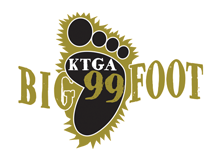July 8, 2022 |
A new healthcare provider is making the rounds at Memorial Hospital this summer, seeing patients daily. Carson Walker is the first medical student assigned to the hospital through a new partnership with the University of Wyoming. MMHC marketing director Stephanie Hinkle said Walker started on Tuesday.
Audio PlayerPictured above: File photo of MHCC. Photo by Cali O’Hare/Bigfoot 99.
Walker, who is from Star Valley, Wyoming, will only be in Rawlins for a month. He is enrolled in the University of Wyoming’s WWAMI program. Started in 1997, WWAMI is a collective medical school arrangement between five states: Washington, Wyoming, Alaska, Montana and Idaho. It allows medical students to complete their four-year medical education and receive their Doctor of Medicine degree at a fraction of the cost. As part of the deal, they must practice medicine in Wyoming for three years. Past graduates include Logan Taylor of Sinclair. Brant Schumaker is the director of the WWAMI program at UW in Laramie. Schumaker says the program attracts bright young students who want to give back to their state.
Audio PlayerUpon entering WWAMI, each student signs a contract that requires them to return to Wyoming and practice for three years once they finish their residency training. In exchange, they receive a top-rated medical education at a fraction of the cost.
Audio PlayerThe annual tuition for a WWAMI student at UW is about $80,000 a year, which is much lower than other universities. Participating students who fulfill their contract after graduating can reduce their student loan debt by at least $300,000, leaving them largely debt-free at the start of their career.
As part of their education, third year medical WWAMI students undergo hands-on, patient-centered clinical rotations at hospitals in participating states. Each clinical rotation lasts six weeks at an in-patient and ambulatory settings where students put their medical school studies to practice in specialty areas such as family practice, internal medicine, pediatrics, and OB/GYN. A second-year med student, Walker is participating in a four-week, ungraded summer program before he begins is clinical clerkship.
Audio PlayerFor stand-alone rural hospitals not connected to a medical network, like MHCC, programs like WWAMI can backfill staffing shortages that are the new normal across the country. Hinkle told Bigfoot 99 that medical partnerships like WWAMI, or the OB/GYN contract MHCC forged with the hospital in Laramie are the future of rural medical care.
Audio PlayerWalker is the first student that WWAMI has placed in Rawlins. Shumaker said the program targets rural hospitals when placing medical students for their clinical clerkship. For instance, students are not placed at hospitals in Casper, Cheyenne or Laramie. The director of UW’s WWAMI program explained why Rawlins made the list for the first time.
Audio PlayerSince its introduction in 1997, 298 Wyoming have earned medical degrees the WWAMI program. By September of last, 131 of 194 Wyoming-WWAMI graduates had completed residency and returned to Wyoming. Of the 131 returnees, 102 remain in Wyoming practicing medicine.
Audio PlayerOne recent graduate of the program is Jesse Hinshaw of Encampment. He’s completing a residency in Colorado. Both Governor Mark Gordon and U.S. Senator John Barrasso have visited with WWAMI students in recent years, including Hinshaw, and expressed support for the program.
Walker is the first WWAMI student to be placed at MHCC, but he won’t be the last. Hinkle said Rawlins is now on the approved list of training sites where third year students will be sent for a six-week clinical rotation.
Audio PlayerRawlins’ location on Interstate makes it convenient for UW medical students, who reside 90 minutes away in Laramie. The next placement could come as soon as next year, Schumaker said.
Audio PlayerBetween all five participating states, 270 students participate in the program. In Alaska and Wyoming, it’s 20 students a year. Montana has 30. In Idaho, it’s 40, and in Washington, it’s 160 divided between Seattle and Spokane. All WWAMI students must be residents of the state in which they apply.













